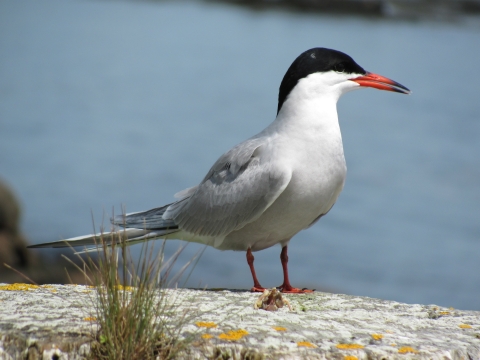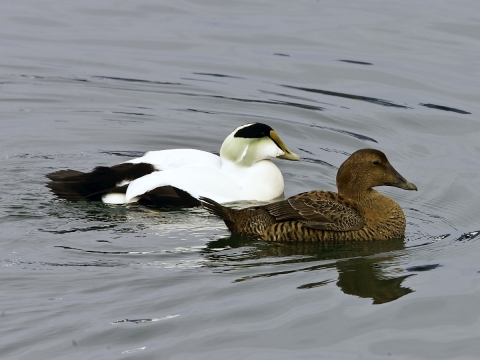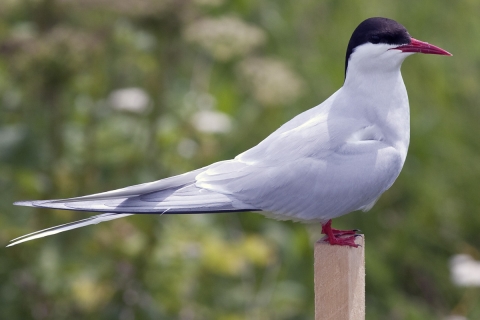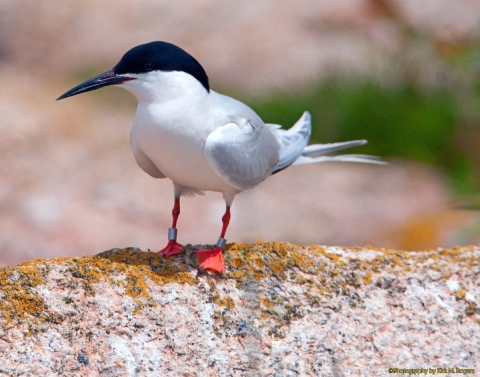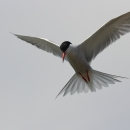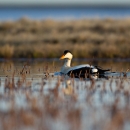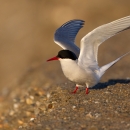Featured Species
Common terns have a gray back; wings are gray above lighter below, with dark tip; white belly; black cap; reddish/orange bill with black tip; in flight their wings appear centered on the body. The terns are small, slender seabird with long, pointed wings and straight pointed bill; plunge dive for fish or skim fish from surface; generally lay eggs in shallow depression in vegetation or cobble; migrate south for winter along the coast of Brazil and Argentina.
Common eiders are the largest duck in the northern hemisphere. They are especially conspicuous since they tend to nest in large colonies on coastal islands. Breeding season runs from late April to mid-August. During the non-breeding season, eiders form large aggregations along coastal areas from the Gulf of St. Lawrence and Newfoundland south to Virginia.
Artic terns Maine threatened species; have a gray back; wings look white from below with small dark tips; black cap; short red bill; in flight their wings appear close to the head. The terns are small, slender seabird with long, pointed wings and straight pointed bill; plunge dive for fish or skim fish from surface; generally lay eggs in shallow depression in short vegetation or cobble; winter along the icepack of the Antarctic, and complete annual migrations that exceed 42,000 miles.
Roseate tern US and Maine endangered species; gray body; pale gray, slender wings; black cap; their bill is mostly black. The terns are small, slender seabird with long, pointed wings and straight pointed bill; plunge dive for fish or skim fish from surface; generally lay eggs in shallow depression in tall vegetation undercover; migrate south for winter along the coast of Brazil and Argentina.



